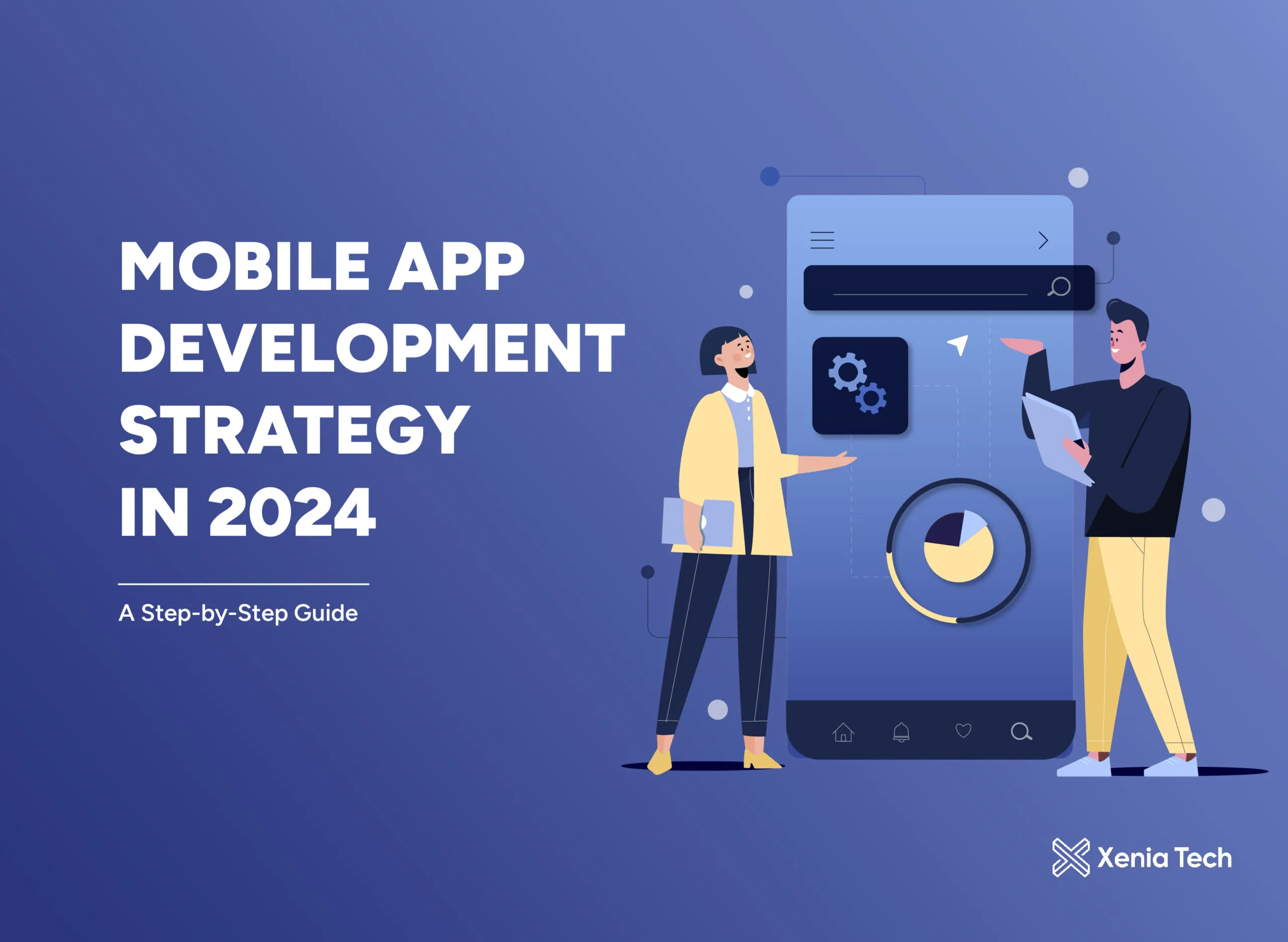In the past decade, mobile apps have transformed our work, life, and interactions. With over 7.1 billion users, mobile apps are expected to earn over 613 billion US dollars by 2025, according to Statista. From 2016 to 2023, global app downloads surged to 257 billion. These apps are vital for socializing, shopping, and managing money. They streamline tasks, save time, and boost productivity. Yet, the market has become more competitive. Now, a solid mobile application development strategy is crucial to align your app with your vision.
Step 1: Market Research

A clear strategy for your enterprise mobile app is vital. It aligns development with business goals and ensures value for both the company and users. This involves setting a framework for development, launch, and management, focusing on the app’s purpose, key features, and long-term effects.
Analyze and Define Business Objectives
Before diving into development, it’s essential to clearly define what you aim to achieve with your mobile app. Whether your goal is to increase brand visibility, boost sales, improve customer engagement, or streamline internal processes, understanding your business objectives will guide every decision you make throughout the development process. These objectives should be specific, measurable, and aligned with your overall business strategy.
Understand Customer Expectations
Customer-centricity is at the heart of any successful mobile app. Begin by identifying your target audience—who they are, what they need, and how they interact with similar apps. Use tools like surveys, focus groups, and user interviews to gather insights into their expectations and pain points. This information will be invaluable in shaping the features and user experience of your app.
Conduct Competitor Research
Understanding the competitive landscape is another critical aspect of market research. Identify your main competitors and analyze their apps to see what works well and where there might be gaps. Look at user reviews, app ratings, and feature sets to gain insights into what users love and what frustrates them. This research will help you identify opportunities to differentiate your app and offer something unique that stands out in the market.
By investing time and resources in this market research phase, you’ll be better equipped to develop a mobile app that not only meets your business goals but also resonates with your target audience, setting the stage for long-term success.
Step 3: Choose Your Mobile App Development Approach

The next step is choosing the right app development approach for your project. The choice you make here will influence everything from the app’s performance and scalability to the time and cost required to bring it to market.
Native vs. Hybrid vs. Cross-Platform Development
- Native Development: Native apps are developed specifically for one platform, either iOS or Android. It uses platform-specific programming languages like Swift for iOS and Kotlin for Android. This approach provides the best performance and access to all device features. However, it has higher development costs and longer timelines because you need to separate codebases for each platform.
- Hybrid Development: Hybrid apps are built using web technologies like HTML, CSS, and JavaScript and then wrapped in a native container. This app can run on multiple platforms with a single codebase, reducing development time and cost. However, they may not perform as smoothly as native apps and may have limited access to device features.
- Cross-Platform Development: Cross-platform development tools like React Native and Flutter allow you to write code once and deploy it across multiple platforms. This approach strikes a balance between performance and cost-efficiency, offering a near-native user experience while maintaining a single codebase.
Prototyping and MVP (Minimum Viable Product)
Before fully committing to the development of your mobile app, you may consider creating a prototype or building an MVP.
In app development, a prototype is an early version used to test ideas, designs, and user interactions. This happens before full development. Meanwhile, a Minimum Viable Product (MVP) includes only essential features. Its goal is to test the app concept with real users.
Step 4: Manage the Mobile App Development Process
Managing the mobile app development process is key. It keeps your project aligned with your goals, timeline, and desired outcomes. Below is your important check-list for this step:
Set up Clear Lines of Communication
Effective project management depends on seamless communication. Your developers need to open lines of communication from the very beginning. Hence, make sure that you have regular meetings, updates, and progress reports to keep everyone up-to-date and aligned in each stage of the project. Some communication platforms are very effective and well-used these days, such as Slack, Jira, or Trello.
Set Milestones and Deadlines
Break down the project into smaller milestones with clear deadlines. This will track the progress of the project and how it stays within the set schedule. Each milestone should have clearly defined deliverables. They could be the completion of a feature, a design mockup, or a beta version of the app. Regularly reviewing progress against such milestones makes it easier to detect delays or problems of any nature early on.
Quality Control and Testing
Quality assurance and testing are part and parcel of the app development process. Following a strong testing strategy, you will have unit testing, integration testing, and user acceptance testing. Testing at regular intervals in the development lifecycle enables the discovery and rectification of bugs at the best possible point in time, reducing the likelihood of big problems after launch. You should also make sure that your app adheres to all the relevant security and compliance standards.
Manage Resources and Budget
Successful resource management will help to ensure that the project is completed within budget and on time. Make sure your team has the right tools, technology, and support for efficiency. Monitor the budget closely, allowing for unexpected costs. Also, manage workload to avoid overworking the team, which can reduce productivity and increase errors.
Enable Agile and Iterative Development
An agile approach to development enables more flexibility and adaptability. Agile methodologies, such as Scrum or Kanban, foster iterative development of the app in small incremental pieces.
A developer is better positioned to put in place feedback from the stakeholders and users on an ongoing basis. All this process of change and improvement will not knock the project off its track.
Step 5: Launch A Strong Marketing Strategy
You may have a competitive product, but it can only succeed with an effective marketing strategy. This includes pre-launch, launch, and post-launch phases.
Pre-Launch Activities
Create anticipation using press releases, social media buzz, and teaser marketing. Use email marketing to keep prospective buyers interested and informed of the approaching launch. Engage with bloggers or influencers in your industry to generate buzz.
Launch Strategy
The best time for your app to be launched is when it will have the most impact. If possible at all, collaborate with app stores to ensure that they feature your app. To increase visibility consider a simultaneous campaign on various platforms such as social media, email, and paid ads.
App Store Optimization (ASO).
Optimize your app’s listing on Google Play and the App Store through App Store Optimization (ASO). Place relevant keywords in the title, description, and tags for discoverability. Positive reviews, engaging descriptions, and good screenshots can greatly enhance program visibility to potential users.
Sum Up
Above are steps for a mobile app development strategy that may help your project run smoothly. The market for mobile apps is very dynamic. Hence, remember to keep updated about the latest trends. Furthermore, make sure that you have deep market research and a robust marketing strategy to boost your application flight to the success.
Learn more:




